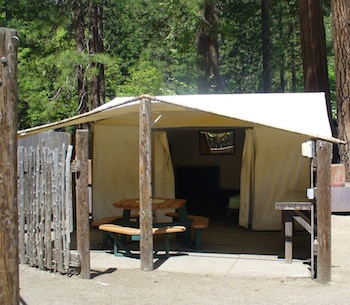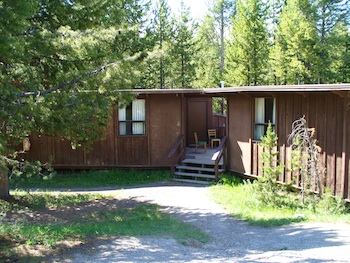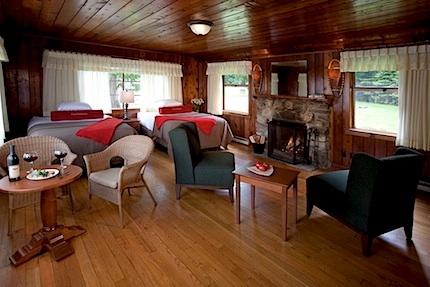Editor's note: While many national park lodges are on the National Register of Historic Places, not all lodges reflect the preservation and well-maintained appearance you might expect for such properties. In this, the second of our two-part series, the Traveler looks at why some properties are not as well-maintained as you might expect.
Concessions Backlog
The National Park Service has struggled to keep up with its concessions contracting. Back in 1998, Congress directed the agency to rewrite and update the 1965 concessions regulations. While that work was being done -- it wasn't finished until 2001 -- many long-term contracts were placed on a hiatus of sorts, and parks worked on a year-to-year basis with concessionaires.
"The '98 law basically has put in place a much closer attention to what the capital investments are, what the conditions are, and has funded a training program for personnel to pay attention to that," explained Dick Ring, who ended his Park Service career as associate director for administration and business programs with oversight of concessions and now works for the National Park Trust. "But it’s taken a while to roll all 600 of those contracts over. And the bigger they are, the more complicated they are, and the process to roll and renew a contract has been .... it hasn’t been quick, let’s put it that way."
Jeff Olson, a Park Service spokesman in the agency's Washington headquarters, says the current backlog of concessions contracts needing to be brought into compliance with the revised regulations is down to about 20 contracts. While that's a great improvement from 600, the outstanding contracts can prevent some businesses that need long-term contracts from obtaining bank loans for improvements.

Despite their ramshackle appearance, the Housekeeping Camp tents in Yosemite have a popular following. Photo by David and Kay Scott.
For instance, at Yorktown in Colonial National Historical Park in Virginia the contract for a restaurant in the Cole Digges House runs out December 31, yet the Park Service just recently has gotten around to floating a new contract proposal. While the agency was intending to offer a contract extension of up to 12 months, the restaurant's operator wants a guaranteed extension, not one that could be terminated before those 12 months play out if the Park Service awards a long-term contract to someone else.
Drawing up a contract prospectus is not easily done, and it can become even more time-consuming when you realize that not all parks have dedicated concessions personnel to work on contracts.
"It’s a very detailed process, and while some parks have a dedicated person to work on that, other parks do not," pointed out Mr. Olson. "It might be the administrative officer who has all these other duties. Work on the prospectus gets done as that person gets done with all the other chores that need to be done that day.”
When the process works, it can work very well. A 2008 stay at Yellowstone National Park included a night in a Western Cabin at Canyon that looked as if it had just been built. Beautiful pine was in heavy use throughout, from the bed frame to the desk, dresser, wainscoting and even the trim. The work was the result of a contract renewal reached with Xanterra Parks & Resorts, one that dictated the renovations.
At Olympic National Park, the changes dictated by the 1998 concessions act have taken hold and seem to have resulted in a smooth-running operation that has the facilities at Lake Crescent and on Hurricane Ridge in well-kept shape. ARAMARK Parks & Destinations, which in 2010 received a 10-year lease to run the concessions there, has substantially renovated the Roosevelt Fireplace Cottages and Singer Tavern Cottages at Lake Crescent. The work included inside and out renovations, including new roofs.
The concessionaire also overhauled and made over both the Fairholm General Store and the Hurricane Ridge Visitor Center, said Todd Gubler, the general manager of the facilities for ARAMARK.
"I like to say we’re the crown jewel now of Olympic National Park because we've put a lot of money into making these properties the best. We’re the icon of the park, and I think ARAMARK has done a really good job of making sure this property looks like an icon, instead of a property that looks like a concessionaire has been taking money (out of the business)," he said. "That’s the fence you have to straddle as a concessionaire in the parks. The public thinks we’re just out here to bleed these properties for the money and, really, we’re here to enhance the park experience.”
The Process Of Concessions
A business degree would be helpful if you're interested in following the concessions process in the National Park System. Before the 1998 concessions act was passed, concessionaires returned relatively little of their income to the parks, what money they invested in capital expenses in the parks accrued to their ledgers and had to be paid back if they lost their leases, and the money that did go to the Park Service in the form of franchise fees actually went to the General Treasury. As a result, the Park Service had to seek annual appropriations to funnel back into the aging structures.

From time to time there has been talk about razing Froniter cabins in Yellowstone and replacing them with motel-like lodgings. David and Kay Scott photo.
The 1998 revisions not only led to higher franchise fees paid by concessionaires, but 80 percent of those fees remain in the park in which they were collected to be spent on the faciities, said Mr. Ring, and the remaining 20 percent goes to the Park Service's Washington office for running the concessions operations.
Additionally, concessionaires no longer are allowed to build up substantial investments in the lodgings, investments that can make it nearly impossible for another concessionaire to take over the operations, for they would have to pay the outgoing concessionaire for those investments.
"You have properties like in Yellowstone where no one can bid anymore because it’s so, it’s hundreds of millions of dollars of assets that are owned by the concessionaries that has to be put up up front," Mr. Gubler said.
At Olympic, for example, not only does 80 percent of the franchise fee paid by ARAMARK stay in the park to support the concession facilities, but ARAMARK also must dedicate 3 percent of its revenues to a dedicated maintenance fund.
"But I don’t have carte blanche on how it’s spent, the park dictates how it’s spent, what I can use that on. I send them proposals on what I’d like to spend it on. And then they tell me yes or no," the general manager said. “I had all the Singer Cottages’ roofs replaced last season, that was paid for out of my maintenance account. Right now the dining room will be getting new windows this winter, a couple of my buildings are getting all new windows put in out of that account.
"So, stuff like that we can spend. So if a subfloor goes bad, we have money set aside off of every dollar that’s spent on the property is set aside to go back into the property. That account has a substantial amount of money in it," continued Mr. Gubler. “And it has to all be spent by the end of the lease. I give them a statement every month of how much is sitting there, but our goal is that at the end of the lease we will have invested all that, the park will have allowed us to put that money back into the property. That account has to zero back out. A lot of times right at the end you’ll see huge projects happen. For example, the previous concessionaire reroofed, repainted, they did a whole bunch of work right before we took over.”
Now, not all concessions contracts are equal. Concessions in parks such as Yellowstone and Yosemite are more valuable than, say, those in Badlands or Death Valley national parks, and so those winning those desirable contracts generally pay more in franchise and maintenance fees, and so more money is available to pump back into the facilities.
The Process Also Fails
ARAMARK also has been the concessionaire at Shenandoah, but earlier this year, after three decades in the park, failed to win a new lease. Part of the seeming inattention to daily maintenance could have been due to uncertainty over the lack of a long-term contract.
"If you don’t have any idea whether you’re going to have a contract or not, are you going to want to make a signifcant investment, even if you should?” says Shenandoah Superintendent Marta Bogle.
Several attempts over a number of weeks were made to contact officials for the concessionaire who could explain their approach to maintenance at Shenandoah, but with no success. To the company's credit, Superintendent Bogle did say that ARAMARK has accomplished more than a few large projects in the lodging facilities, such as repairing the terrace structure at Big Meadows Lodge, and reroofing buildings elsewhere in the park.
Going forward, DNC Parks & Resorts, which won the park's concessions contract, will have to figure out how to deal with that punch list. The company currently is putting together its management team for Shenandoah, and hasn't yet drawn up its maintenance plan.
However, the Park Service seems willing to give DNC some time: the maintenance list contains dates, running out to 2016, for when the repairs are to be made.
Additional reporting for this series was provided by David and Kay Scott, the Traveler's lodging experts and authors of The Complete Guide to the National Park Lodges.


 Support Essential Coverage of Essential Places
Support Essential Coverage of Essential Places






